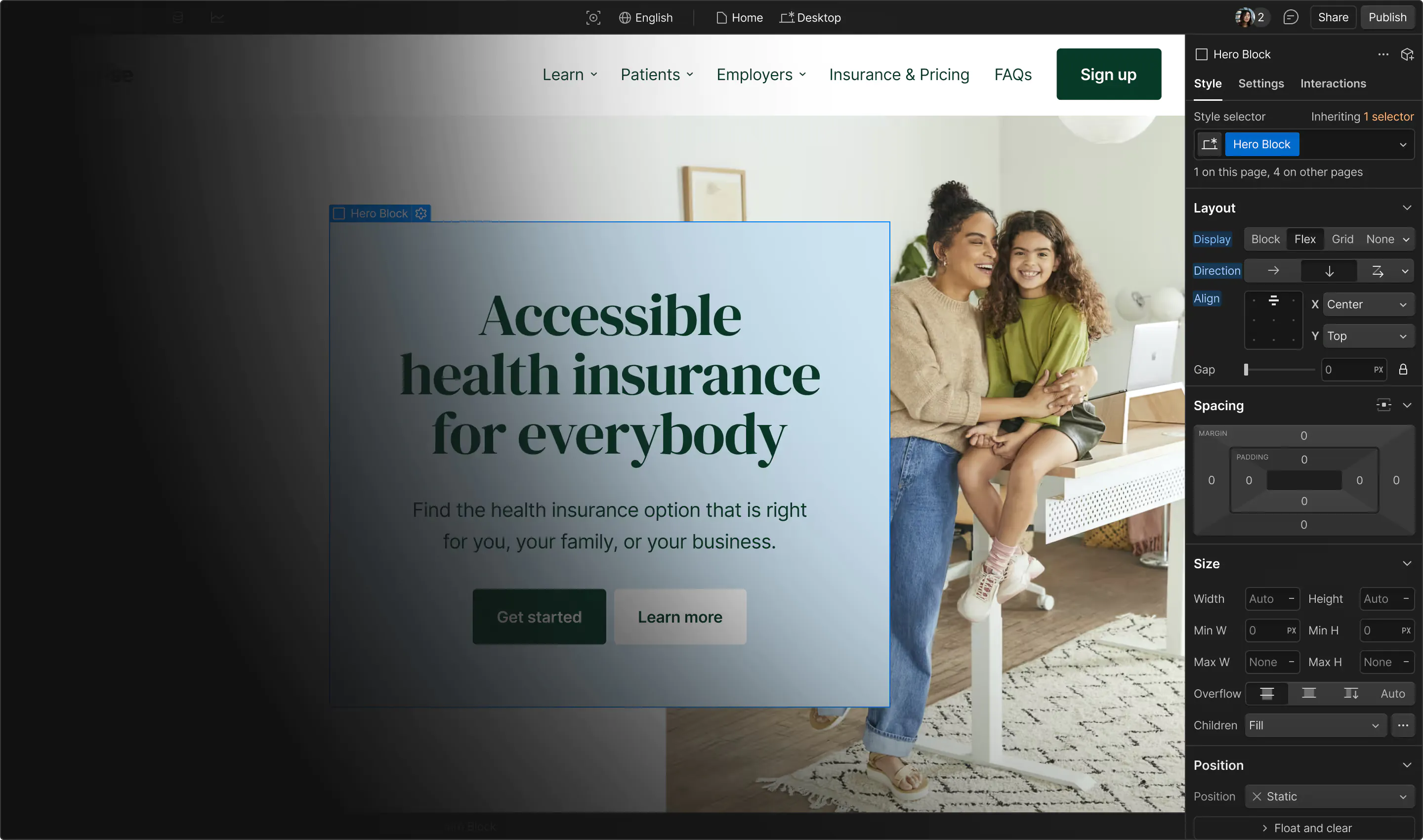Without promotion, even the best content can go unnoticed.
Properly advertising your website ensures it reaches your intended audience. Without the right content promotion strategies, all the time and resources spent creating valuable blogs and web designs go to waste.
To make sure target audiences discover and engage with your content, you must seize opportunities to connect with potential customers, build your brand, and drive conversions.
Learn how to promote content to magnify your company’s online presence.
Why content promotion strategies matter
Promoting your online material increases visibility, driving more traffic to your website by generating interest in your offering. Strong strategies maximize your return on investment in content creation and help build brand awareness and authority within your industry.
Content promotion also improves your search engine rankings. When more people engage with your brand, search engines recognize your site as a valuable resource and rank your site higher, leading to higher discoverability and more organic traffic over time.
For example, promotion strategies like influencer collaborations and guest posts can generate opportunities for high-quality backlinks, boosting your search engine optimization (SEO) efforts.
Overall, content promotion is a critical aspect of a successful digital marketing strategy and is necessary for sustained growth and long-term success.
14 content and marketing promotion strategies for 2025
Effective content promotion strategies capture attention and drive audience engagement. Here are 14 promotion techniques with best practices to ensure your content reaches its full potential.
1. Boost visibility with advanced SEO techniques
Advanced SEO techniques involve optimizing your content so your website ranks higher in search engine results pages (SERPs), increasing visibility and organic traffic. When your pages appear toward the top of search results, they attract more clicks and drive traffic without affecting your advertising budget.
Best practices:
- Conduct keyword research. Use long-tail keywords relevant to your audience to shape content that addresses their needs and pain points.
- Consider on-page SEO. Optimize metadata like titles, descriptions, and headers with targeted keywords and images with alt text.
- Prioritize technical SEO. Ensure your website loads quickly, is mobile-friendly, and has a proper URL structure.
- Use schema markup. Use structured data and rich snippets to help Google and other search engines understand and accurately index your content.
2. Link to top-performing content
Internal linking requires adding hyperlinks within your content that direct visitors to other pages on your site. These links improve the user experience by guiding readers to relevant content without them having to leave your website for additional information.
Best practices:
- Link to high-value pages. Identify your website’s cornerstone content and best-performing pages and link to them from relevant new material.
- Use descriptive anchor text. Ensure the linked text is informative, is relevant, and summarizes the destination page’s topic.
- Audit links regularly. Periodically review and update internal links so they lead to current, valuable content.
3. Share valuable content with email subscribers
Email marketing involves sending targeted content directly to a subscriber’s inbox. It’s an effective tactic for delivering personalized content, generating leads, and building lasting relationships with your audience.
Best practices:
- Segment your list. Group subscribers and potential leads into segments based on their behavior and interests to send more relevant content.
- Personalize emails. Include the subscriber’s name in the subject line and copy, and tailor content to their preferences to encourage conversions.
- Include clear calls to action (CTAs). Craft CTAs encouraging email recipients to take specific actions, such as reading an article or downloading a resource.
4. Make your content shareable
Ensuring content is shareable makes it convenient for website visitors to circulate your blog posts and recommend your products on social media platforms. This extends your brand’s reach as people share your content across different channels and allows you to reach new audiences without additional marketing effort.
Best practices:
- Add social sharing buttons. Add prominent CTA buttons to draw attention and encourage visitors to share content.
- Include engaging visuals. Add eye-catching multimedia like images, infographics, and videos that entice people to share.
- Optimize click-to-share elements. Highlight noteworthy quotes, statistics, and facts that people can share and credit to you with one click directly from your website.
5. Create social media content for broad distribution
Tailoring content specifically for social networks like Facebook and TikTok lets you use each platform to direct traffic back to your website. With over 5 billion users worldwide, these platforms help you reach a wider audience quickly.
Best practices:
- Generate platform-specific content. Create content that plays to each platform’s strengths, such as stories and visuals for Instagram, articles for LinkedIn, and posts for X.
- Maintain a consistent posting schedule. Identify peak engagement hours and keep a regular posting schedule to continuously engage your audience.
- Use hashtags and tags. Increase the discoverability of your social media profiles and website by adding trending hashtags to posts and tagging related accounts.
6. Implement an omnichannel marketing strategy
Omnichannel marketing means creating a seamless, consistent experience across all online and offline channels. It’s a multichannel content promotion technique that ensures a uniform brand message and user experience through your website, social media profiles, and physical locations.
Best practices:
- Uphold consistent branding. Follow a business style guide to maintain cohesive branding across all channels, considering elements like colors, tone of voice, and typography.
- Integrate marketing campaigns. Synchronize content promotions across your website, email, and social media so they reach multiple target audiences simultaneously.
- Leverage journey mapping. Understand and optimize the various touchpoints in your customer’s journey.
7. Repurpose and update existing content
Content repurposing involves adapting existing content into different formats, like translating long-form written articles into graphics or videos. This extends your material’s lifespan by reaching larger audiences in various formats.
You can also update existing content on your website with new information, images, and SEO enhancements and promote it as if it were brand new. Regular updates keep your brand relevant and help reengage your existing audiences while appealing to new ones.
Best practices:
- Convert blog posts into videos. Create short video summaries of your most popular articles.
- Turn data into infographics. Allow visitors to visualize statistics and data points through infographics, making them more digestible and shareable.
- Compile articles into ebooks. Combine related blog posts and topics into comprehensive guides or ebooks.
- Add new insights. Include recent data, trends, and case studies to provide the most reliable, up-to-date information and gain an edge over competitors.
- Reshare on social media. Promote updated content through email newsletters and on platforms like Facebook, Instagram, and TikTok.



















The marketer's guide to personalization
Discover how to create personalized website experiences that meet buyers’ expectations in this ebook.
8. Promote popular content with CTA banners
CTA banners are prominent advertisements on your website that encourage visitors to take action. They usually appear at the bottom or side of the screen and draw attention to high-value content for visibility and engagement.
Best practices:
- Place CTAs strategically. Place CTA banners in high-traffic areas like the homepage or at the end of articles.
- Create clear messages. CTA banners offer limited space, so use concise and compelling language with action-oriented phrases, such as “Try it for yourself!” or “Buy now!” to prompt action.
- Perform A/B testing. Test different versions of your website by comparing various designs and placements to find the most effective, conversion-optimized combination.
9. Use paid advertising
Paid advertising requires paying for ad placements on platforms like Google, Facebook, and Instagram to promote your content. Paid ads can target specific demographics to ensure your content quickly reaches a highly relevant audience who’s more likely to take action.
Best practices:
- Target your campaigns. Use detailed targeting and search retargeting campaigns to reach your ideal audience.
- Write compelling copy. Write engaging, persuasive ad copy that includes relevant keywords to encourage clicks.
- Monitor and optimize. Regularly track ad performance with data analytics tools and make adjustments to improve results.
10. Partner with influencers
Working with influencers is a marketing technique that involves collaborating with individuals and brands who have large, loyal followings to promote your content. Influencer marketing can amplify your company’s reach by connecting you to new audiences and lending credibility to your brand with positive reviews.
Best practices:
- Identify the right influencers. Choose influencers whose values, audiences, and content style align with your brand identity.
- Generate collaborative content. Work with influencers to create authentic content that resonates with their followers while promoting your brand.
- Track results. Measure the impact of influencer campaigns on traffic and engagement to see how they benefit your bottom line.
11. Create video content
Video content can include interviews, customer testimonials, and product or service demos. Videos are highly engaging and convey complex information in a more digestible package than lengthy articles or stat-packed infographics. You can also add a presenter or a voiceover with background music to humanize your videos and provide a personal touch.
Best practices:
- Be concise. Keep videos engaging and to the point to maintain viewer interest and reduce bounce rates.
- Prioritize top-quality production. Invest in high-grade video production, including clear audio, high-resolution recording, and professional editing.
- Optimize for SEO. Use relevant keywords in video titles, descriptions, and tags.
12. Encourage employee advocacy
Ask employees and teammates to share company content on their personal social media profiles. They can extend your reach by circulating brand-related information, such as offers and user testimonials, and lend your promotions a personal touch and credibility.
Best practices:
- Provide shareable content. Give employees and team members easily shareable content they can repost, such as prewritten posts or visuals that capture attention and are quick to consume.
- Incentivize sharing. Offer incentives and recognition to employees who actively share brand-related content.
- Track and measure. Keep tabs on the impact of employee advocacy to see how it affects reach and engagement.
13. Engage in online communities
Actively participate in forums, social media groups, and other online spaces where your target audience gathers. This helps you establish a brand presence and improve your company’s authority while sharing your content with an interested audience.
Best practices:
- Provide value. Share helpful insights, answer questions, and contribute to discussions without overly promoting your content and products or services.
- Maintain consistent engagement. Regularly participate in communities to build trust and recognition and establish your position as a thought leader in your industry.
- Share relevant content. When appropriate, share your brand’s content as a resource that adds value to the community.
14. Host webinars and live events
Webinars are interactive online sessions where you can share valuable content and engage directly with your audience. These events let you engage with attendees on a personal level while providing in-depth brand-related information and answering questions in real time.
Best practices:
- Choose relevant subjects. Select topics that address your target audience’s needs and interests.
- Spread the word. Promote the event on your website, email, and social media channels to attract attendees.
- Invite real-time engagement. Encourage active participation during the event through Q&A sessions, polls, and interactive discussions.
Support content promotion with Webflow
Implementing an effective, well-rounded promotion strategy maximizes your content’s impact and encourages meaningful engagement. But whatever approach you take, you must back it up with a high-performing website.
With Webflow, you can access advanced SEO tools, seamless app integrations, and a visual content management system. Webflow’s features provide everything you need to amplify your content’s reach.
Start growing your business with Webflow today.

Build with Webflow
Webflow Enterprise gives your teams the power to build, ship, and manage sites collaboratively at scale.































